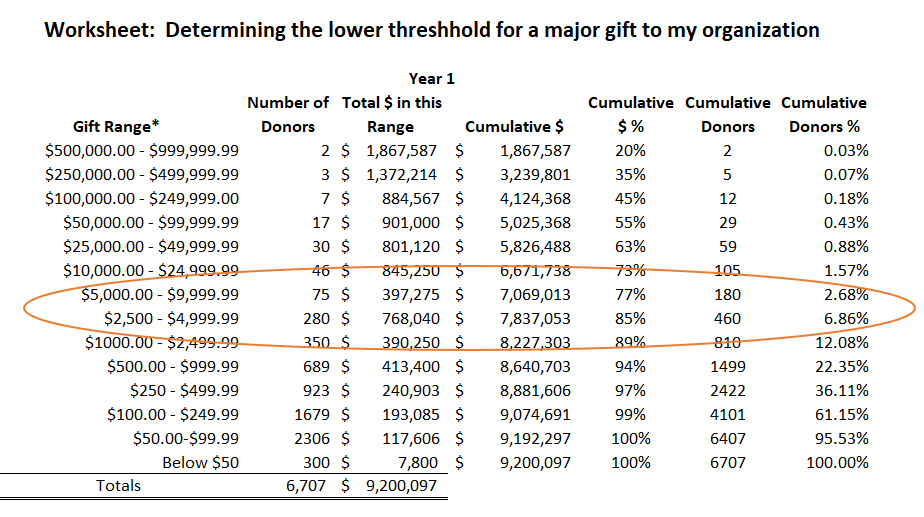What does it take to be a true major gift prospect? How good are you and your organization at qualifying potential major gift donors? Would you like to get better…a lot better? Let’s start with the most basic question…
How does your organization define a major gift?
If you ask the director of development of a small nonprofit organization supporting a local need, the answer might be $1,000 a year. If you ask the senior vice president for advancement at a major research university, the answer might be $100,000 a year. For many organizations, the answer is somewhere between $10,000 and $25,000 over a three-to-five-year period.
How might you decide the number for your organization?
Here is one approach…apply the “heavy half” rule, also known as Pareto’s Law.
The economist Vilfredo Pareto (1848–1923) discovered that for much of human activity in all different areas of life a small percentage (20%) of all those participating in that activity were accountable for a very large percentage of the result (80%). In fundraising, this 80/20 rule has moved to being closer to 90/10 or ever greater.
To find your “sweet spot” for a major gift threshold, begin by creating a gift table of cash for each of the prior five years. You want a donor’s total cash given in a year, not each induvial gift. Then for each year, sort those gift amounts highest to lowest. As you look at the gift amounts given in each year, determine what percent of those gifts represent 95% of the money that was given in that year. The lowest range included in that amount represents the beginning of your major gift level.
In this simplified example, our organization would look at two ranges—the one where the lower limit is $2,500 and the other just above that, beginning at $5,000 per year. Given that major gifts commitments are usually paid over a3-to-5year time period, we would initially choosethe $5,000 threshold (77th percental of total dollars).

Now we have our threshold major gift number and the number of current donors who meet that threshold.
The next step is to determine if there are enough donors and potential donors at that threshold to fill out your major gift staff portfolios. Depending on the number of staff available and the number prospects each portfolio is to contain, the threshold may be too high or too low.
So our next question is Who else should be included?
Contact us for a free conversation about this process or other work of The Garrow Company.

